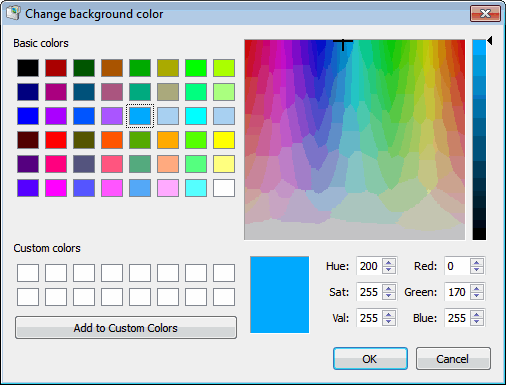


To the left is more aggressive and to the right is less aggressive. Beneath it is a slider to set the threshold for hot pixel removal. For the 2nd image, I will click the hot pixel filter to ON and the hot pixels will go away. And half way down is a tool called Preprocessing with a box for hot pixels and another for dead pixel. Also note over on the right hand side, that I am in a category to adjust things pertaining to the sensor (note the tiny Bayer Matrix button near the top). But I do it here for educational purposes. But I should also add that in my final image, I used these dark frames during stacking, thus I had no need to get rid of the hot pixels. This was enough to produce lots of hot pixels.
#Change background color on rawtherapee iso
I used an Olympus EM5ii and the exposure was 60 sec at ISO 1600. In order to focus our attention of hot pixels, I changed the image to B&W so all hot pixels show up as white instead of red, or green or blue. And at this magnification, the background color noise was ugly. They are white since this is an image taken with the lens cap on and then blown up to 200% to better see the hot pixels. In the first image, the Hot Pixel remover is turned OFF and you can see a number of white pixels. RawTherapee is a free product that has a tool for removing hot pixels. The camera is a Canon EOS-M5 and I bought it a little over a year ago. Now I'm wondering, how normal is this for an APS-C sensor? What can cause this to happen if it wasn't already like this from factory?Īnd is there a way to get rid of them in post-processing? Other shots in the same series, with different exposure and ISO, show them as well, all in the same place.Īnd I feel that this quite ruins a shot that is otherwise quite OK for the circumstances. Here's one of the shots where I really noticed 800, 15 seconds exposure. Higher ISO or longer exposure will bring out more of them.
#Change background color on rawtherapee full
Link to the full picture on Flickr is here: you view it at 100%, you will see quite a constellation.Īt ISO 320 with a 1 second exposure, or ISO 400 with a 1/2 second exposure, there's one red pixel that begins to show. I'm showing here a small crop of one of my test images to show you what I mean: Oddly, at 4000 ISO there are fewer hot pixels and at 6400 ISO I didn't see any anymore I didn't try higher ISO values since I'll never shoot with them anyway (already at 1600 ISO I'm unhappy with the noise of my Canon APS-C sensor.). I did some experiments today, taking shots with the lens-cap on with various ISO settings and exposure times.īetween ISO 320 and ISO 4000 I can see "hot pixels", more with longer exposure time, and worst at 3200 ISO. The other day, when I was shooting at night with a tripod, I noticed that my sensor seems to have several "hot pixels".


 0 kommentar(er)
0 kommentar(er)
